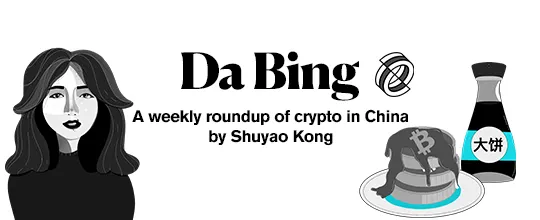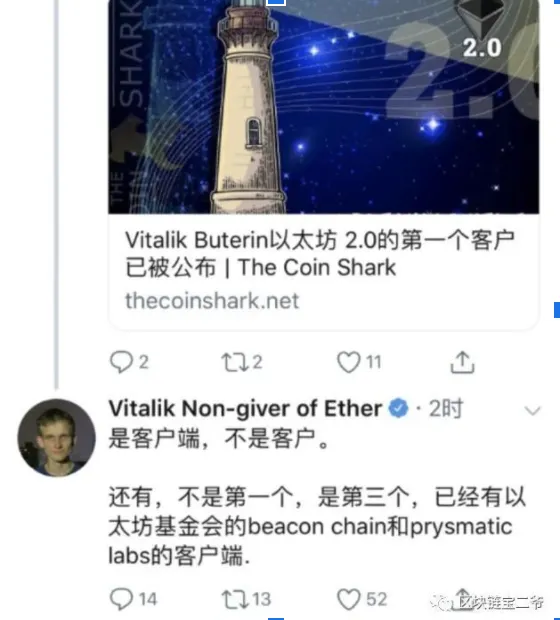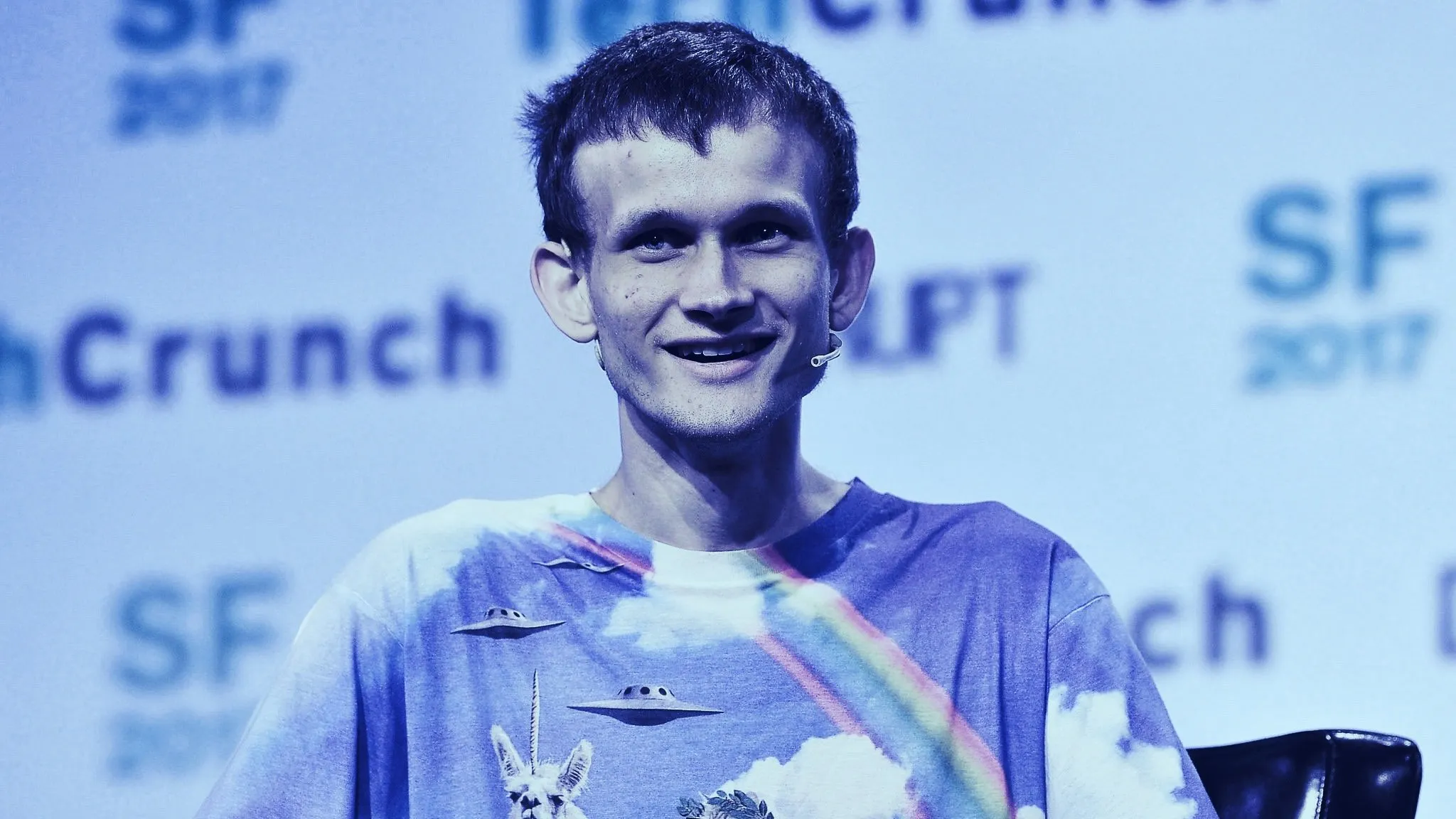
In China, Vitalik Buterin is known as V神—the V God.
Like most nicknames, this one, for Ethereum’s co-founder, is meant to be somewhat amusing. But, again, like most nicknames, the name conveys the reverence many show the 27-year-old. China has a huge and vital community of Ethereum developers and investors. But beneath that, people there take some pride in the fact that the Chinese crypto community rallied behind the platform, and its boy godhead, in its earliest days when it was most needed.
On Sunday, Buterin was in China virtually if not in the holy flesh, doing one of his popular Zoom Q&As. The AMA was organized by Dr. Bin Lu, the founder of the crypto media platform Bihu, and one of the earliest Ethereum supporters in China.
The V God smoothly answered the community’s questions about EIP-1559, ETH2.0 and Layer 2 Rollups—all in Chinese, of course.

With the rise of Binance SmartChain, many think of China as a country that’s only capable of producing centralized blockchains that copy applications from real blockchains. However, that is simply not true. Since Ethereum’s initial inception, China, and the Chinese community, have played an instrumental role in securing the blockchain’s survival and growth.
This week’s da bing re-visits the early days of Ethereum and Buterin in China, presenting a past that sheds much light on Ethereum’s strong community culture in China, even in 2021.
The Long March
Buterin is an old friend of the Chinese crypto community. Since 2014, he’s been a frequent visitor, spending months in Shanghai, picking up the Chinese language and legendarily karaoking with crypto VCs and developers.
Though most people know that Ethereum really took off in 2017 thanks to ICO mania. Most don’t realize that initially, the project had struggled.
“During the early days, the dominant voices were Bitcoin, mining operations and Bitshares. Ethereum was new and Vitalik was completely unknown,” Jan Xie, a former core researcher and developer at Ethereum Foundation, told me. Xie, who also founded Nervos, a public blockchain project, said that in the early days of Ethereum in China (circa 2014), some people thought that the young Buterin wasn’t even real: “Many were even suspecting that he’s a hired actor and that Ethereum is a project headquartered in Hangzhou, where Ethfan, Ethereum’s Chinese community, is based.” (Xie should know: He co-founded Ethfan, which is the largest and oldest Ethereum community in China)
Just when Buterin looked like he was running out of money, he met Feng Xiao, the CEO of Wanxiang Blockchain and General Partner at Fenbushi. Xiao is tremendously influential both in the investment and political world. As an early crypto adopter, he bought $500,000 worth of Ethereum in September, 2015. That money, according to Buterin, apparently saved Ethereum from an early death.
Xiao also introduced Buterin to his wider investor network, which established the earliest Ethereum community.
The face of a new platform
By spending months in China, Buterin made friends with other influential crypto people such as Bo Shen, Partner at Fenbushi, Bin Lu (the Bihu founder is more commonly known by his nickname, “Gulu.”), Jan Xie, and many bitcoiners.
“The early Ethereum adopters were mostly libertarians,” Mindao Yang, co-founder of dForce and an Ethereum ICO participant told me. The communities were built around people who were not only fluent in English but also heavily engaged in the open-source community, he said. These people are freedom lovers, he tweeted later.
People were not only impressed with the open, decentralized nature of the platform, they dug the quiet, intense braininess of the V God too. “Vitalik was different,” one ETH ICO investor and whale told me. “He had all this economic and game theory in his presentation, and that was eye-opening.”
Buterin was the perfect face of this platform, and lots of new money started to flow into the nascent project. According to the whale, though Ethereum’s core development was happening in the west, most of its funding actually came from the east. “The Silicon Valley folks have the technology, while the Chinese have the money.”
Building a bridge to China
The ICOs in 2017 brought more people to the Ethereum community and only burnished Buterin’s image as a demigod.
He was a frequent speaker at conferences in China, at roundtable discussions, and online AMMs. His Chinese got so good that he started correcting Chinese translations. His online AMM this past weekend was done completely in Chinese, including technical terms.

But Buterin’s China connection cannot be separated from many organizations that serve as a liaison between him and the Chinese community. His base of true believers grew and included Ethfans, ECN, Sparkpool (one of the largest Ethereum mining pools) and imToken, a popular crypto wallet in China. These organizations routinely translate Buterin’s English papers and thoughts thoughts into Chinese, host offline meetups to understand the latest research topics in the Ethereum world, and even help troubleshoot technical problems on WeChat.
Many of them are also the vital lifeline of the Ethereum ecosystem by serving as miners, traders, and early DeFi preachers.
Keeping the faith
This is not to say that Ethereum is Eden. There has certainly been trouble in paradise from the likes of “Ethereum Killers” such as PolkaDot, which is huge in China and gaining traction all the time.
As Xiang Yao, founder of the Ethereum research and discussion group Shanghai Advanced Tech Seminar, told me, despite Ethereum’s large influence in China, communities have been largely scattered.
“Vitalik is very active and has been extremely available to communicate with the Chinese Ethereum community,” Yao said. “But the problem is that compared to the recent ‘Eth-killer communities,’ such as Polkadot, that have deployed a centralized, developer-focused program, the Ethereum community is scattered and grassroots”
But there isn’t one approved, 100% correct way to build a community, Yao pointed out. And, growing a blockchain community isn't a zero sum game. This wasn’t an Ethereum land grab. People can and will self organize.
For instance, after Ethereum’s recent scaling challenges, a new community, Tog-eth-er.github.io, was formed to facilitate deeper technical discussions. The group’s name is indicative of the nature of the Ethereum community nowadays.
It seems to me that Ethereum has grown past the days where it needed its god to be in China to keep the community going. Jan Xie echoed the same sentiment: “Ethereum is sufficiently decentralized that communities are able to self-organize.” Are there problems training people and keeping things organized, compared to upstarts like PolkaDot and Binance Smart Chain? Definitely.
But as Yao put it, Ethereum has a deep base of believers in China who will stick with the V God. “Chinese capital has been instrumental in building Ethereum and I think Vitalik appreciates that,” Yao said, “Plus he has many friends in China.”
Do you know?
Ethereum’s official name in Chinese is 以太坊, but most refer to the blockchain as “姨太,” which means “concubine” in Chinese. During the bull market when ETH slashed to below $100, many complained that the token was performing like a concubine—it follows but never leads the market.

